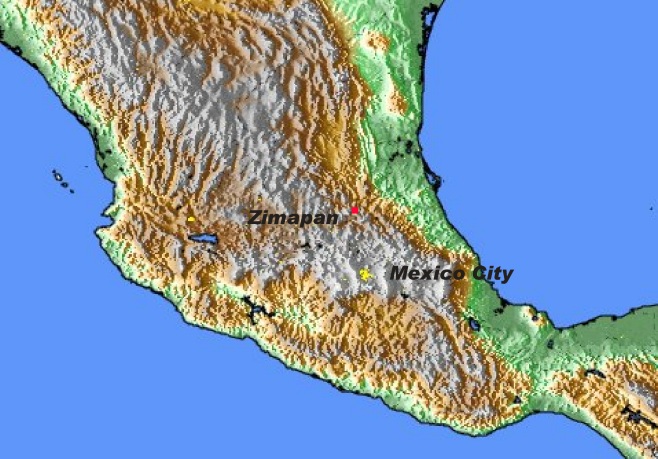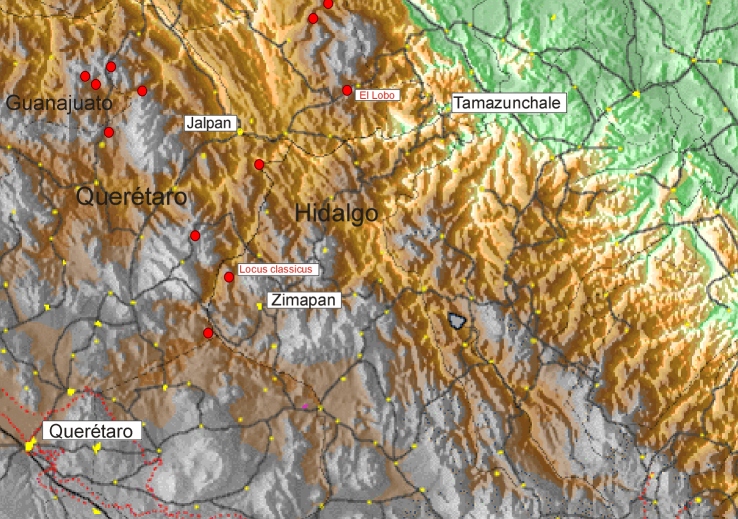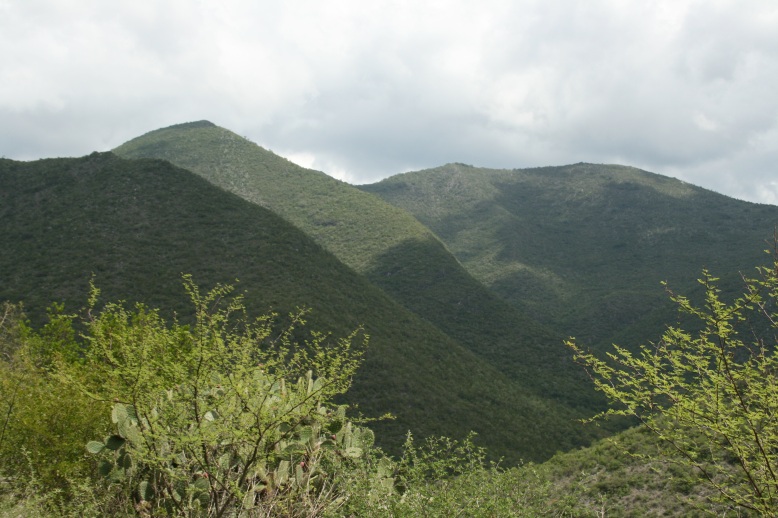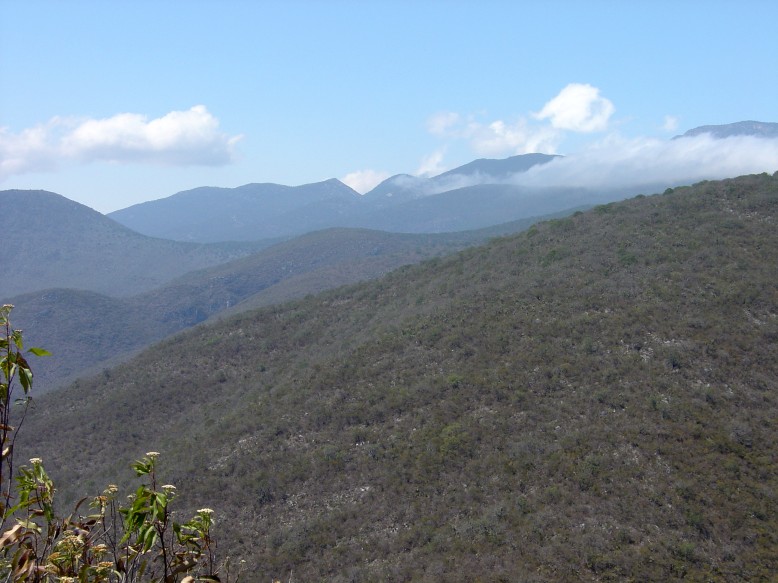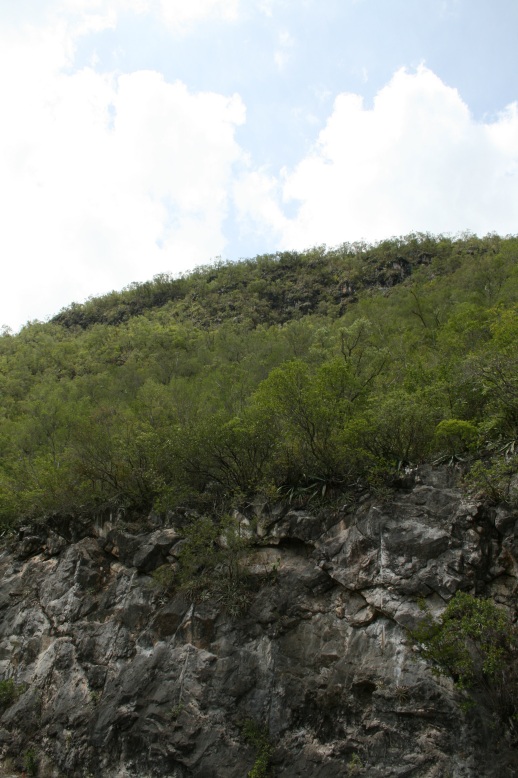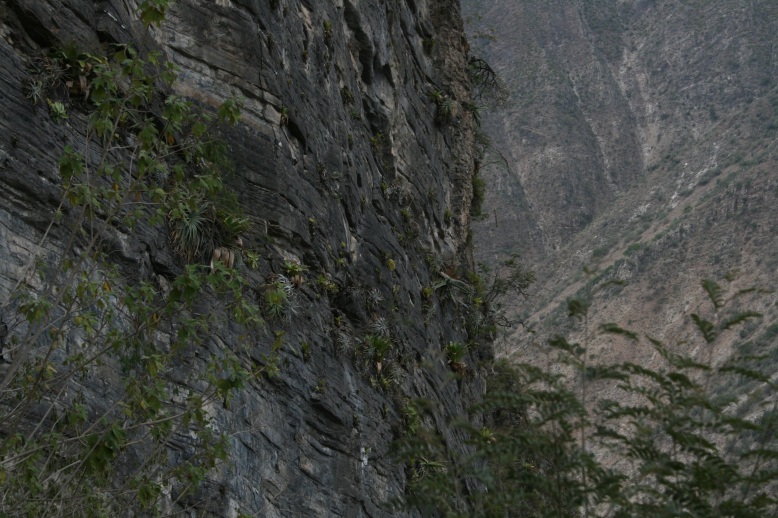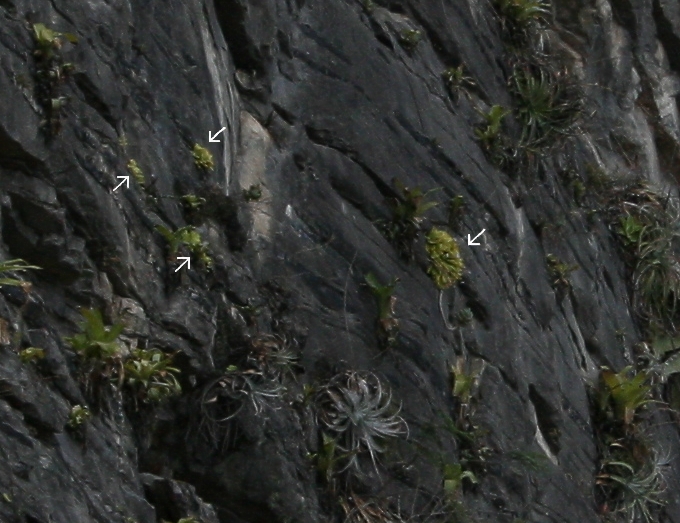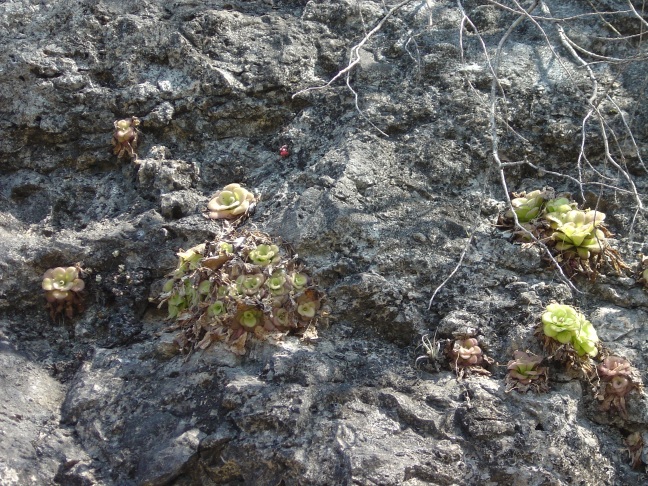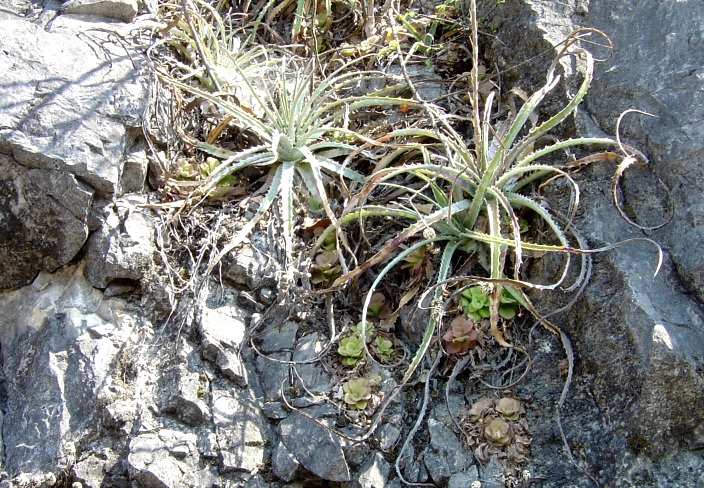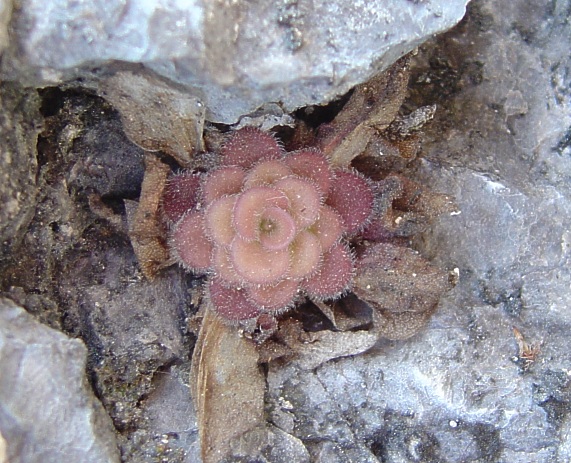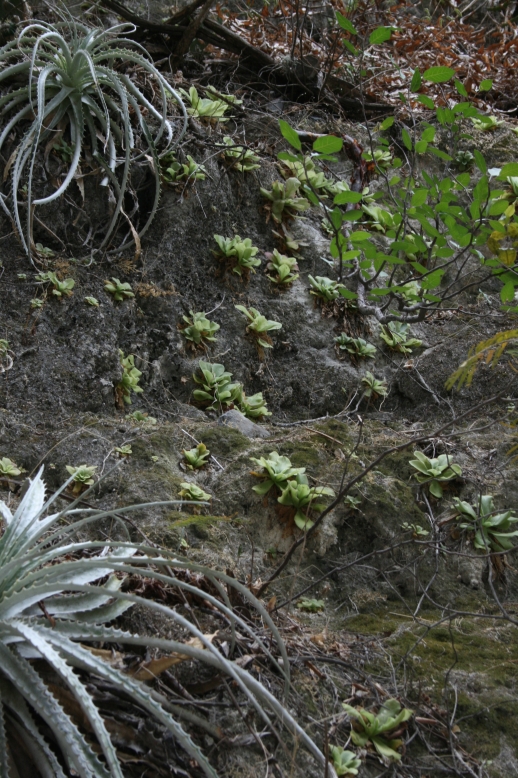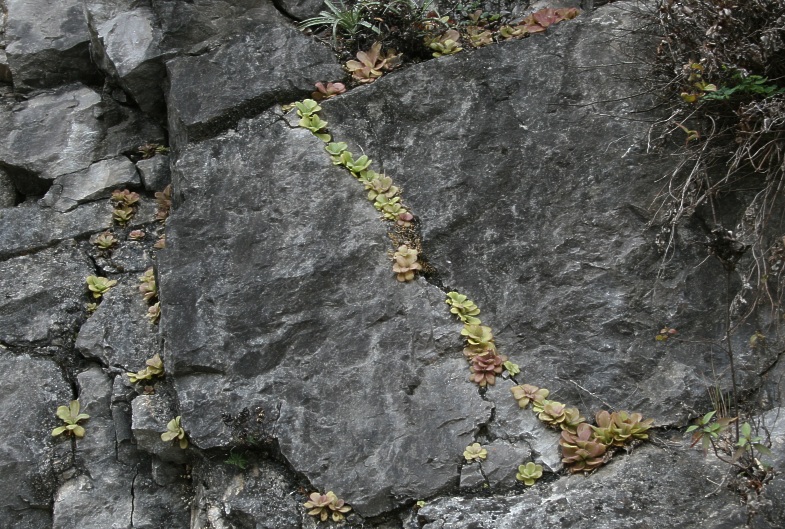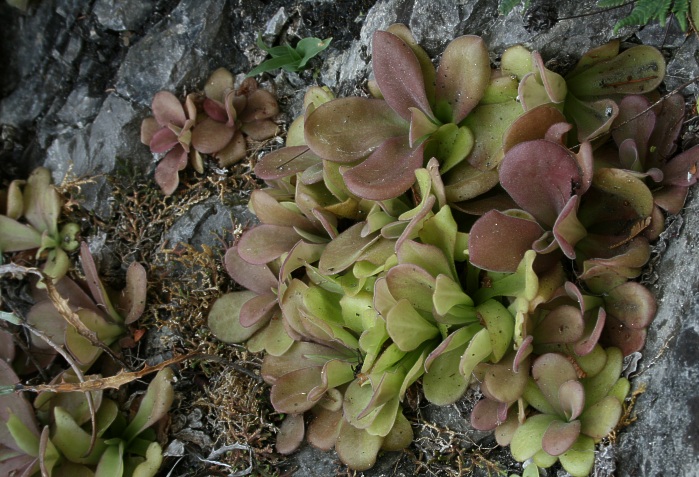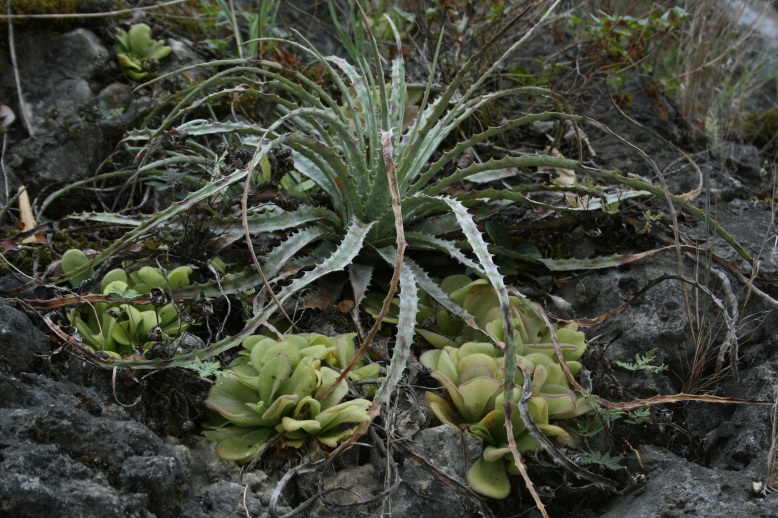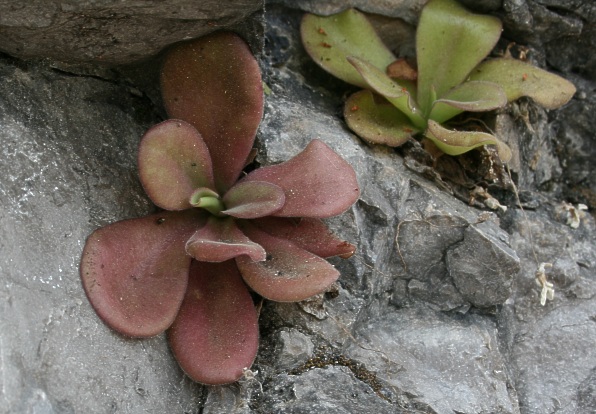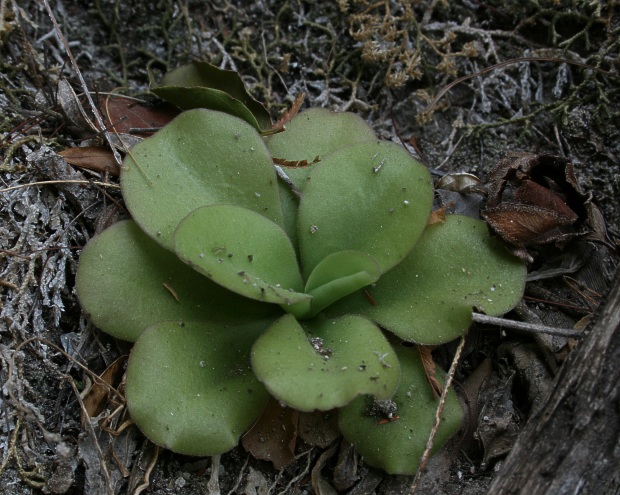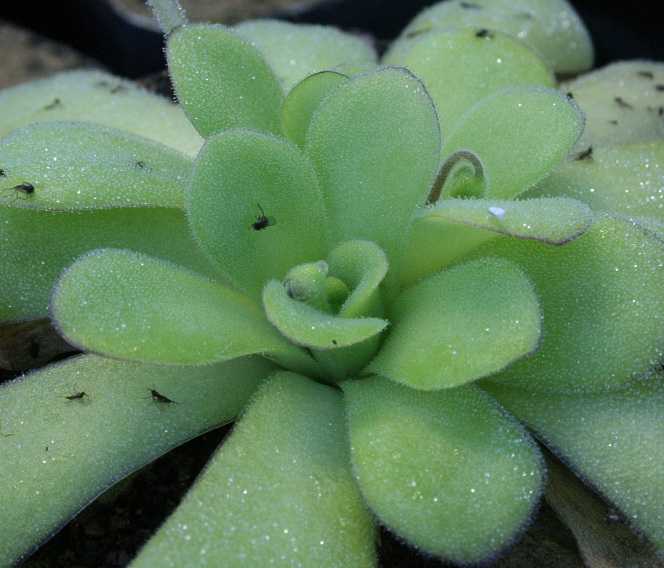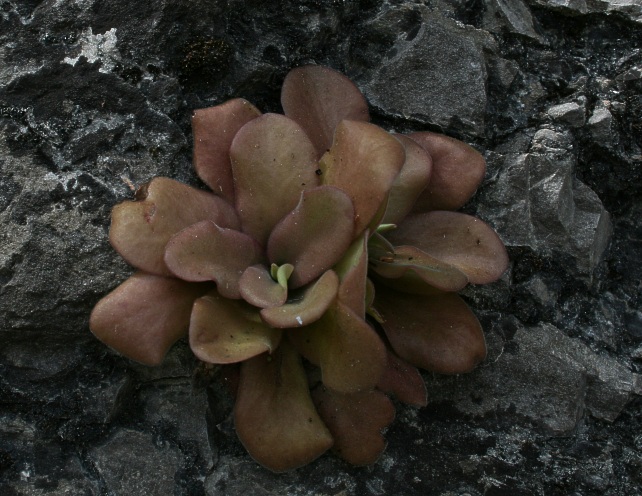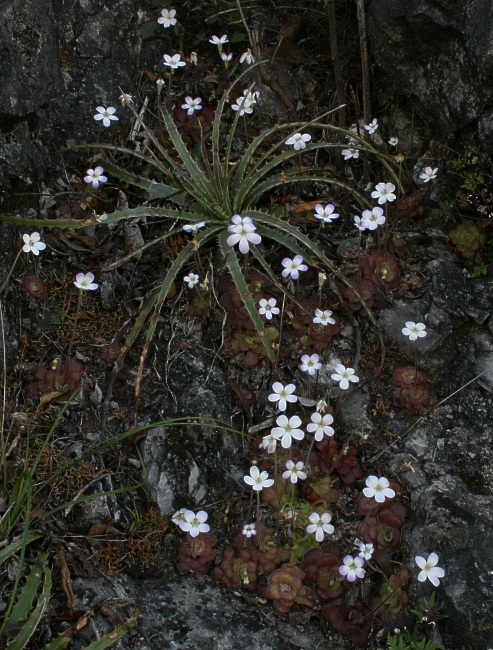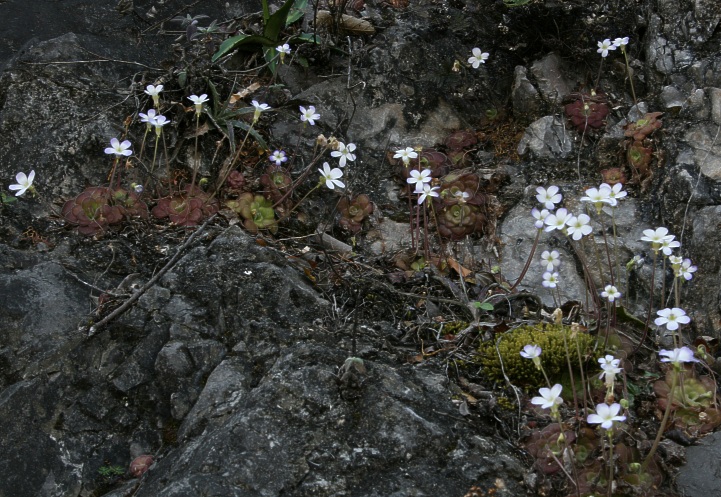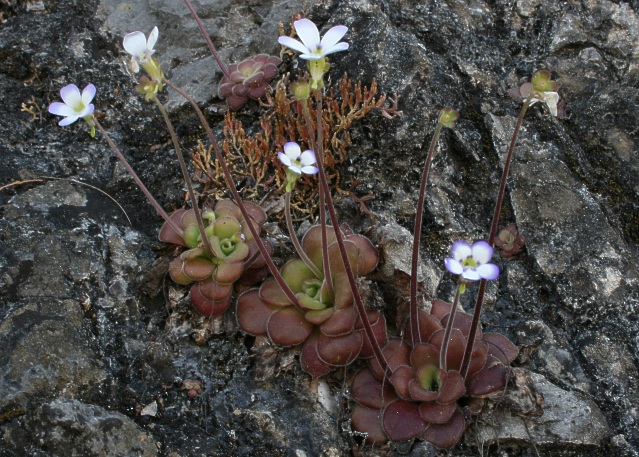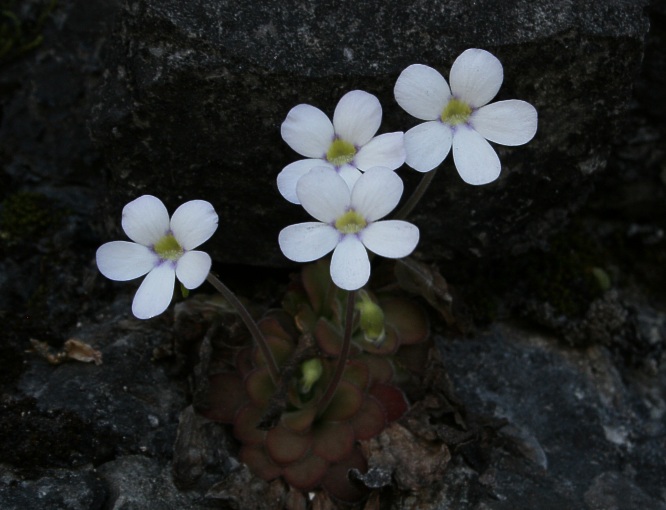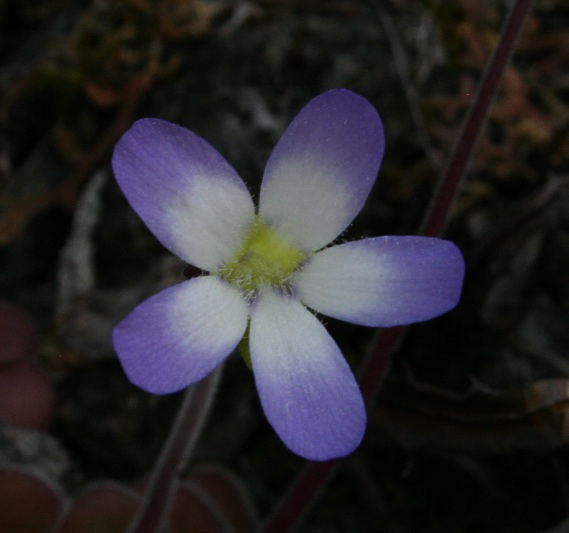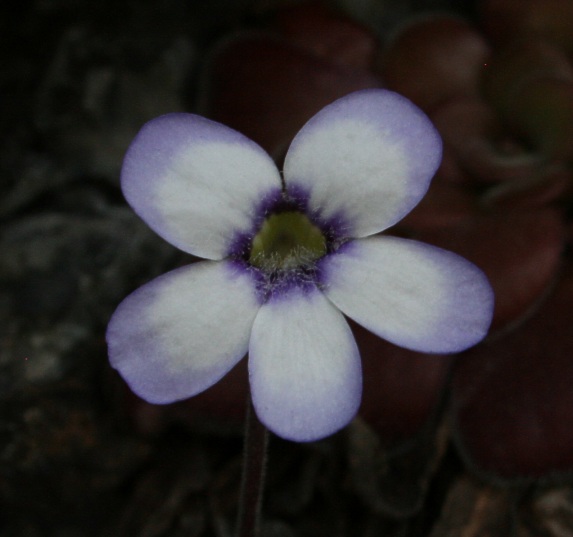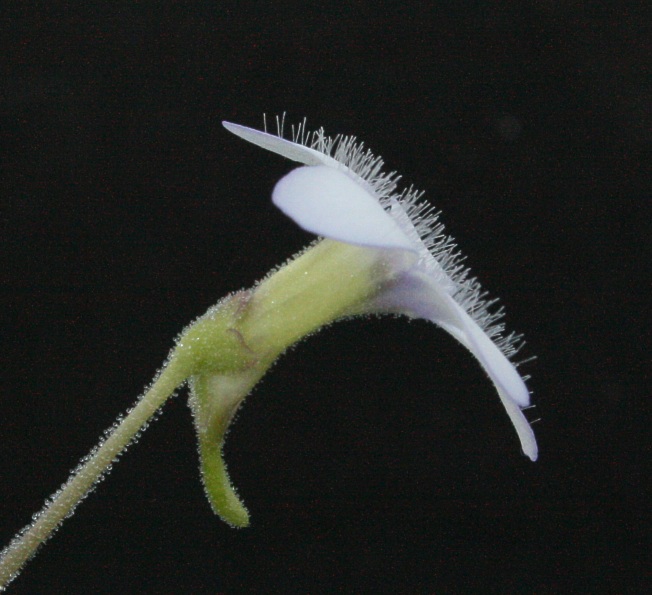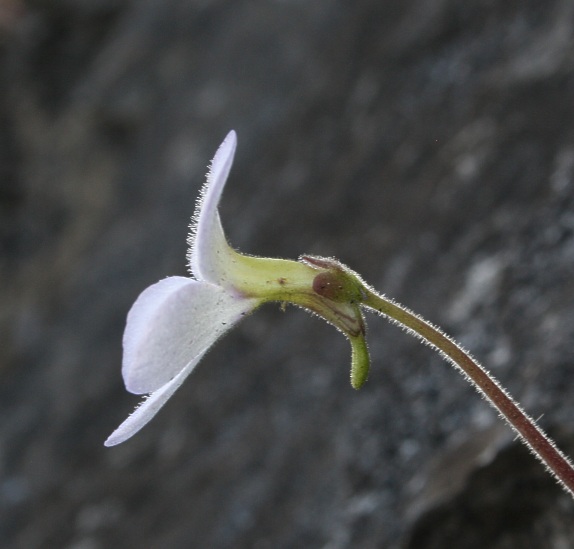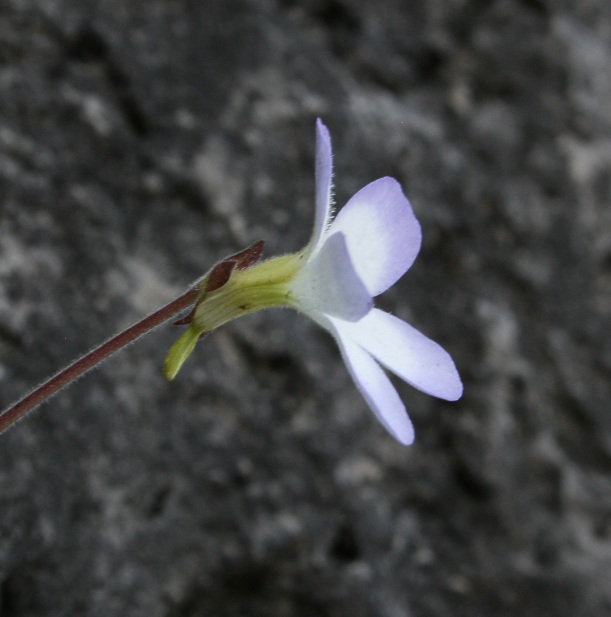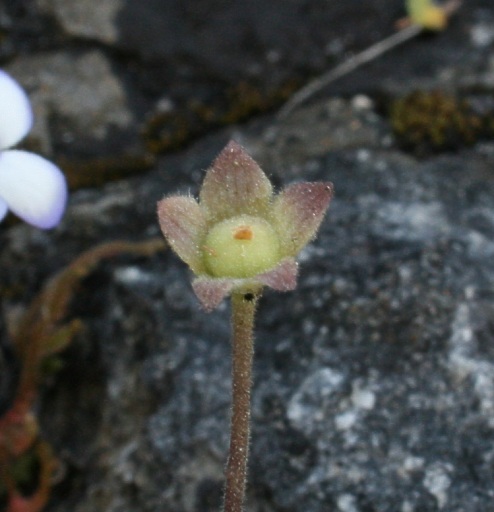
Oliver Gluch's World of Carnivorous Plants or: "What you always wanted to know about butterworts" |
| Impressum |

| Home | Origin | Prey | Species | Plant Purchase | Other Carnivorous Plants | Info about Carnivorous Plants | About me |
Pinguicula agnata Casper (1966)Based
on
herbarium sheets with plants collected on slopes above
the "Barranca de Tolimán" (Tolimán Canyon), state of
Hidalgo, the German botanist Siegfried Jost Casper
described in 1963 a new species and named it P.
agnata. The name is derived from the Latin term
"agnatus" and means "late borne". This refers to the
complicated taxonomic history of specimen related to
this species, as in earlier days other botanists have
related those specimen to different species. In the
meantime there were additional locations of P.
agnata found in the Mexican states of Hidalgo,
Querétaro and Guanajuato.
The
predominant
vegetation where P. agnata occurs consists of
thorny bushes and shrubs, succulents and cacti. Locally
this vegetation type is called "matorral submontano".
Currently this species is known from elevations between
350 and 2000 m above sea level. The climate is
characterized by a dry period in winter and a more rainy
season during summer. During the dry season most shrubs
and bushes do drop their foliage. Although Casper
described this species as tropical homophyllous, field
studies and cultivation of plants have revealed that in
reality P. agnata is tropical
heterophyllous. During the dry season plants do form
smaller, more compact leaves that mostly do not
bear any carnivorous glandular hairs, while during the
rainy season leaves are more elongated and are
covered with glandular hairs. P. agnata mainly
grows in crevices or in mosses in more shady areas on
vertical calcareous cliffs.
The compact winter rosette consists of 10 to 20 obovate, green, reddish or redbrown coloured leaves. The upper surface of the leaf is densely covered with white hairs. During more wetter dry seasons it can happen that on the winter leaves there are also some glandular hairs present. The size of the winter rosette varies between 5 and 7 cm in diameter. The
summer
rosette consists of 10 to 15 sub-erect, spathulate or
obovate-oblong, 7 to cm long leaves. THe upper leaf
surface is densely clothed in sessile and stipitate
glandular hairs. The margin of the leaf can be slightly
turned downwards, but is mostly flat. Leaf colour varies
between dark green, olive green, reddish or red-brown.
Under shady conditions leaves are often green only. As
the plants are dividing regularly, plants are often
found growing together in groups.
In
habitat
plants do flower out of the winter rosette. Major
flowering season is between November and March. In
culture P. agnata can flower from both winter
and summer rosette, which might result from different
growing conditions. Flowers are borne singly on erect
flower scapes that can get between 5 and 23 cm long and
are densely covered with stipitate glandular hairs. The
corolla is subisolob. Petals of the upper lip are
slightly smaller compared to the petals of the lower
lip. Colour of the petals is white with the margin of
the petal more or less pale violet or violet. Some
flowers are completely white or do have only a very thin
violet margin. For most flowers the base of the petals
is marked with pale violet or dark violet spots. on the
whole upper surface or only around the throat the petals
can be densely covered with white hairs. The almost
cylindrical corolla tube can get up to 1,5 cm long and
is of a green or yellow-green colour. The spur is
slightly curved, club-shaped, green, with an obtuse or
rounded tip is densely covered with stipitate glandular
hairs.
The
cultivation
of P. agnata is quite simple. Preferably plants
should not be grown under to wet conditions during
summer, while during winter the substrate should be dry
or only periodically moist, as this helps to prevent any
fungus infection of the roots. The species seems to
prefer a substrate with larger pores that secures a good
aeration of the roots. The use of pure vermiculite has
shown very good growing results.
|
